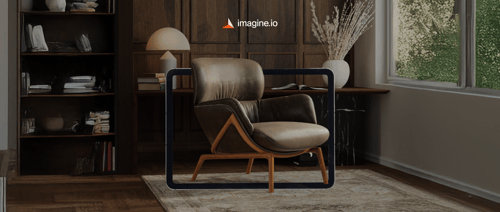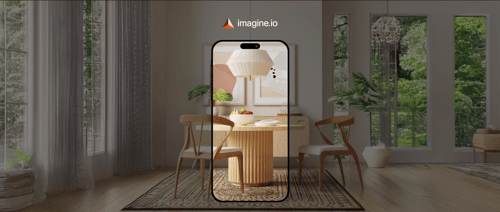A creative director manipulates a 3D sneaker model on a tablet, adjusting textures with a flick of her stylus. Simultaneously, a marketing team in Seoul observes the same model through an augmented reality (AR) interface, crafting a campaign that evolves in real time. This is no futuristic fantasy it's the reality of today's brand pipelines, where 3D visualization and AR technologies are knitting together workflows with precision and flair. As companies scramble to thrive in a digital-first era, these visual tools have become indispensable, driving innovation, streamlining operations, and forging deeper connections with customers.
Quick Listen:
A creative director manipulates a 3D sneaker model on a tablet, adjusting textures with a flick of her stylus. Simultaneously, a marketing team in Seoul observes the same model through an augmented reality (AR) interface, crafting a campaign that evolves in real time. This is no futuristic fantasy it's the reality of today's brand pipelines, where 3D visualization and AR technologies are knitting together workflows with precision and flair. As companies scramble to thrive in a digital-first era, these visual tools have become indispensable, driving innovation, streamlining operations, and forging deeper connections with customers.
The ascent of visual tools signals a profound transformation in business operations. From fashion to automotive, industries are embedding 3D visualization and AR into their processes to enhance efficiency and captivate audiences. A 2023 report pegged the global workflow automation market at $19.76 billion, forecasting a climb to $45.49 billion by 2032 with a 9.71% CAGR. Meanwhile, the visual collaboration platform market, pivotal for integrating these technologies, stood at $12.56 billion in 2024 and is projected to surge to $183.3 billion by 2037. These figures crystallize a critical insight: visual tools are not merely augmenting workflows they're revolutionizing them.
The Surge of Visual Tools in Brand Operations
Envision a fashion brand gearing up for a major launch. Historically, designers, marketers, and sales teams operated in isolation, shuffling static sketches and physical prototypes through cumbersome email chains. Contrast that with today's reality: a unified platform where a 3D dress model is refined by designers, previewed in AR for a virtual try-on campaign by marketers, and shared with retailers all instantaneously. This is the transformative power of visual tools, now indispensable in sectors like e-commerce, automotive, and consumer electronics.
The hunger for immersive experiences fuels this shift. Once a gimmick, AR has become a retail cornerstone, with virtual try-ons and interactive advertisements redefining customer engagement. A 2024 report highlights that 16% of global companies have adopted remote work since the COVID-19 pandemic, spurring the rise of visual collaboration platforms that connect dispersed teams. These platforms, expected to grow at a 17.79% CAGR through 2033, enable brands to produce dynamic content such as 3D product models that seamlessly transition from design to marketing.
Automation further amplifies this revolution. Visual tools are trimming design timelines by automating prototype testing and marketing material creation. A 2025 projection values the workflow automation market at $29,945.2 million, anticipating a leap to $87,743.9 million by 2032 with a 16.6% CAGR. By syncing with platforms like Slack or Trello, these tools foster fluid collaboration across departments, transforming disjointed processes into streamlined workflows.
Tangible Success: Brands Leveraging Visual Tools
Consider the fashion sector. A prominent retailer collaborated with a 3D visualization provider to develop virtual store displays, enabling customers to “try on” garments via AR applications. The outcome? Accelerated product launches and a surge in online engagement. By embedding 3D tools into their pipeline, the brand slashed design cycles and delivered real-time customer interactions, demonstrating that visual tools can both enchant and perform.
In the automotive industry, a leading manufacturer harnessed 3D visualization to create digital car models for customer configurators. Buyers could personalize colors, wheels, and interiors online, watching their customized vehicle take shape instantly. This integration cut weeks from the design process and boosted sales by making the purchase experience engaging. A 2024 report underscores that the application integration market, which underpins such seamless workflows, was valued at $15,898.6 million in 2023 and is expected to reach $55,216.9 million by 2030, growing at a 19.8% CAGR.
Consumer electronics brands are also capitalizing on this trend. One company launched an AR app allowing customers to visualize smart speakers in their homes before purchasing. By weaving AR into their sales pipeline, they simplified buying decisions and increased conversions. These cases illustrate that visual tools don't merely spark creativity they deliver quantifiable business results.
Navigating Challenges in Visual Tool Integration
Despite their potential, visual tools present significant challenges. Merging AR and 3D technologies with legacy systems can be daunting, akin to threading a needle in a storm. A 2021 study on scientific workflows emphasized that high computational and storage demands necessitate robust infrastructure a parallel challenge for brands adopting visual tools. Misalignments can create bottlenecks, stifling innovation and frustrating teams.
Cost poses another hurdle. Deploying these technologies requires substantial initial investments in hardware, software, and training. A 2024 report projects the workflow management system market to expand from $17.11 billion to $307.64 billion by 2034 at a 33.5% CAGR, yet the upfront costs can intimidate smaller brands. Striking a balance between immediate expenses and long-term returns is a delicate act.
The human element complicates matters further. Employees entrenched in traditional workflows may resist new tools, and the learning curve can be steep for non-technical staff. Robust training programs are vital to equip everyone from designers to salespeople with the skills to leverage these technologies. Without such support, adoption falters, and investments underperform.
Unlocking Opportunities and Driving Efficiency
The rewards, however, are compelling. Visual tools elevate customer engagement by delivering immersive, tailored experiences. AR-powered virtual try-ons and 3D configurators don't just draw customers in they foster loyalty. Real-time personalization, such as customizing a car's features or previewing furniture in a home, builds trust and strengthens brand affinity.
Efficiency gains are equally significant. By integrating visual tools, brands can compress design cycles and hasten market delivery. Digital twins virtual product replicas enable testing and refinement without expensive physical prototypes. The projected 16.6% CAGR for workflow automation through 2032 reflects the growing adoption of these efficiency-driven tools.
Collaboration across departments also thrives. When design, marketing, and sales teams operate on a shared visual platform, feedback cycles shorten, and decisions accelerate. A single 3D model can act as a central hub, aligning teams and minimizing miscommunication. In fast-moving industries, this cohesion is a critical edge, where delays can equate to lost market share.
Charting the Future: A Visual-First Paradigm
Industry leaders view visual tools as essential for competitive survival. Experts assert that brands ignoring 3D and AR risk obsolescence in a market craving instant, immersive experiences. The data supports this: the visual collaboration market is poised for a 22.9% CAGR through 2037, propelled by remote work and technological advancements.
The future promises further disruption. In retail, AR could transform smartphones into virtual showrooms. In real estate, 3D visualizations might supplant physical tours. Automotive firms may deepen their reliance on digital twins to optimize production. Yet, success depends on strategic integration selecting compatible tools, training teams, and nurturing collaboration.
For brands ready to embrace this shift, the roadmap is straightforward: begin with a pilot project, scale judiciously, and invest in training to smooth the transition. Prioritize platforms that mesh with existing systems and keep customer experience at the forefront visual tools are only as effective as the value they deliver.
In an era where consumer attention is a scarce commodity, visual tools empower brands to differentiate, connect, and excel. By embedding 3D visualization and AR into their pipelines, companies aren't just adapting they're leading. The future of brand workflows is vivid, dynamic, and unmistakably visual.
Disclaimer: The above helpful resources content contains personal opinions and experiences. The information provided is for general knowledge and does not constitute professional advice.
You may also be interested in: 3D Product Showcase for Bath | imagine.io
Struggling with expensive, outdated product visuals that slow down your creative process and stunt eCommerce growth? imagine.io's AI-powered platform empowers furniture, home décor, and textile brands to effortlessly produce striking 3D images, immersive videos, AR experiences, and interactive configurators. Cut production costs up to 70%, boost conversions 5X, speed up prototyping, and supercharge your online sales. Ready to elevate your product visuals and captivate customers? Book a demo with imagine.io today!
Powered by flareAI.co




.png?width=500&name=How%20to%20Add%20a%203D%20Product%20Configurator%20to%20Your%20WordPress%20Website%20(Complete%20B2B%20Guide).png)
















%20(1).png?width=500&name=Why%20Exploded%20Mattress%20Views%20Matter%20(And%20How%20to%20Generate%20Them)%20(1).png)
.png?width=500&name=Best%20Shopify%20Product%20Configurator_%20How%20to%20Choose%20the%20Right%20One%20(2).png)
.png?width=500&name=Why%20Exploded%20Mattress%20Views%20Matter%20(And%20How%20to%20Generate%20Them).png)



.png?width=500&name=Best%20Shopify%20Product%20Configurator_%20How%20to%20Choose%20the%20Right%20One%20(1).png)







.png?width=500&name=How%203D%20Rendering%20Can%20Make%20or%20Break%20Your%20Industrial%20Design%20Pitch%20(1).png)








%20with%20Digital%20Twins%20and%203D%20Visualization.png?width=500&name=Optimizing%20Your%20Digital%20Asset%20Management%20(DAM)%20with%20Digital%20Twins%20and%203D%20Visualization.png)




.png?width=500&name=Styling%20Home%20Decor%20for%202025_%20From%20Global%20Influences%20to%20Playful%20Personalization%20(1).png)
